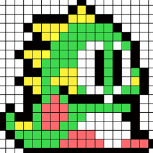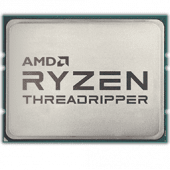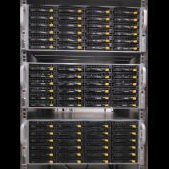Leaderboard
Popular Content
Showing content with the highest reputation on 03/26/24 in all areas
-
This is a bug fix release, resolving a nice collection of problems reported by the community, details below. All users are encouraged to read the release notes and upgrade. Upgrade steps for this release As always, prior to upgrading, create a backup of your USB flash device: "Main/Flash/Flash Device Settings" - click "Flash Backup". Update all of your plugins. This is critical for the Connect, NVIDIA and Realtek plugins in particular. If the system is currently running 6.12.0 - 6.12.6, we're going to suggest that you stop the array at this point. If it gets stuck on "Retry unmounting shares", open a web terminal and type: umount /var/lib/docker The array should now stop successfully If you have Unraid 6.12.8 or Unraid Connect installed: Open the dropdown in the top-right of the Unraid webgui and click Check for Update. More details in this blog post If you are on an earlier version: Go to Tools -> Update OS and switch to the "Stable" branch if needed. If the update doesn't show, click "Check for Updates" Wait for the update to download and install If you have any plugins that install 3rd party drivers (NVIDIA, Realtek, etc), wait for the notification that the new version of the driver has been downloaded. Reboot This thread is perfect for quick questions or comments, but if you suspect there will be back and forth for your specific issue, please start a new topic. Be sure to include your diagnostics.zip.3 points
-
I think it's two fold. One, there is a group of individuals that do this for a living and want to play around it to learn it for their job, or as a way to see if it's something they should deploy at their workplace. Secondly, I think others do it because of the "cool" factor. Don't get me wrong, I still think it's a mighty fine solution (I've played around with it myself), but it takes a lot more configuration/know-how to get it working. Like you said, it doesn't have docker by default, so you either have to create a VM and/or LXC, install docker and go from there. Personally I've played around with Jellyfin on Proxmox...I did it in a VM, I did it with docker in a VM, as well as an LXC and while it was fun, it wasn't no where near as simple as Unraid, where it's click install, change a few parameters and go. I also see a lot of discussion around the "free" options out there. No offence, but these "free" options aren't new. They've been around just as long, if not longer than Unraid and guess what, people still chose Unraid. Why?, because it fits it target market...."home users." Easy to upgrade storage, similar easy to follow implementations for VMs and docker, a helpful/friendly community, plenty of good resources to help you along (ie: Spaceinvader One),etc... There's more to Unraid then just the software and it's why people chose Unraid over the others. People will pay for convenience, it's not always about getting stuff for free. Does Unraid have every feature that the other solutions have...no, but it doesn't need to and IMHO most of them don't really matter in a home environment anyways. Furthermore, there seems to be a lot of entitled individuals. I feel bad for software developers, because people want their stuff, they want them to make changes, add new features, etc... and oh btw, please do it for free, or charge someone else for it, thank you... I've seen a lot of arm chair business people here offering suggestions to just do what the others do; go make a business version, go sell hardware, etc... No offence, but those things sound way simpler than what it actually takes. Not to mention there's no guarantee that it will pay off in the long run and has the potential to put you in a worse situation compared to where you were before. For example, lets say they do offer a business solution and price it accordingly. Since they (business/enterprise customers) will essentially be the one's funding Unraid's development in this case, they will be the ones driving the decisions when it comes to new features, support, etc....it won't be us home users using it for free. I want Lime Tech to focus on Unraid. I don't want them to focus of other avenues that can potentially make things worse in the long run because they have too much going on. Just focus on what they do best and that's Unraid. We can go back an forth all day long. At the end of the day, if you are that unhappy then please just move on (not you MrCrispy, just speaking generally hehe). While I can understand the reasoning behind the dissatisfaction, but to be honest, none of the naysayers have given Lime Tech a chance to prove themselves with this change. Sure we can talk about what "other" companies have done in the past, but in all honesty I don't care about "other" companies, all I care about is what Lime Tech does. Just because others have done terrible things, that doesn't mean every company will. It's ok to be skeptical, but you can be open minded as well. Give them a chance, don't just wish for them to shutdown and close up shop. I mean they've already listened and are offering a solution to those who want security updates/fixes for a period of time after the fact. Furthermore they've also upped the starter from 4 to 6 devices, so they are listening....yet people are still unhappy. Which leads me to believe there will be a group of entitled individuals who will never be happy no matter what they do.3 points
-
To be honest, based on the level of self entitlement shown by many posters regarding the licence changes, I don't know why Lime Tech should even bother trying to make you happy. From my perspective, Lime Tech have bent over backwards in an attempt to be fair and reasonable to existing and new licence holders. Do people think that software development is free? The entire world is in the midst of massive inflation, the cost of developing and maintaining software is not immune to this. Compared to the cost of hardware, the increases to licence costs are tiny. Some people need to grow up and get with the real world.3 points
-
I think it is just due to the nature of Unraid development and philosophy. Limetech historically has taken a very long time to develop and test new releases (even minor ones). There are a lot of variables in a product such as Unraid which tries to run on as many hardware platforms as possible. They also thoroughly test to make sure no data loss will result from a new version of the software. It all takes time. The product also seems to be driven a lot by user requests/needs and priorities can change. I think they would rather just "go with the flow" than publish roadmaps that may change a lot. I do not speak for Limetech. If they did provide roadmaps, we would all likely be complaining about versions/features not making published deadlines. I was a software product manager for 25 years and was in charge of many roadmaps. We rarely ever made the published timelines due to unforeseen engineering roadblocks and trying to control "feature creep." It got to the point that I really has to pad the timelines and then customers complained about excessively-long development cycles. Roadmaps are doubly difficult for small companies with limited resources.3 points
-
Alle usb Ports durchtesten. Wenn das nicht hilft zusätzlichen PCI-USB-Controller versuchen.2 points
-
you should of left it to complete, if you shutdown the container part way through then you will bugger up your database. if you now do have a corrupt database (likely if you did the above) then follow Q4 and Q5:- https://github.com/binhex/documentation/blob/master/docker/faq/plex.md2 points
-
I likely would have felt the same way at first glance if the new pricing was the pricing in 2011 when I bought my first Unraid license. I have faithfully avoided and abandoned all software that has gone to a subscription model over the years; however, what Limetech is moving to is not subscription pricing, it is an annual maintenance fee. If you don't pay the fee, your software still works, your data is still intact, etc. Subscriptions do not work this way. You don't pay and your software quits working. After looking at other options, I very probably would have come back to Unraid for my NAS if the new pricing had always been the way it is moving to and "gambled" yearly on whether or not to pay the fee while I saw where Unraid was headed. It is still a great bargain for what it provides. I have followed this pattern with software that offers a perpetual license for a particular version but comes out every year with a "new and improved" version for which I have to pay an upgrade fee. I will often skip a couple of years and run older software until something new comes along that compels me to upgrade. It will be interesting to see how this plays out for Limetech but I understand and support what they have done with pricing. I am just grateful now to be grandfathered in with my three perpetual licenses. After March 27, that option will not exist for new users.2 points
-
NOTE: As of posting this the Unraid CA library may not have picked up my edits yet, it's usually pretty quick though. I have updated the ':latest' tag option in the Unraid CA template. Select the ':latest' option on a fresh install of RomM to get the new variable and repo. Check the 'Repository' is pre-set to "rommapp/romm:latest" If the template is correct the 'UMASK' will be in the "Show more settings..." section and pre-set to "000" Thank you to @Cryptic3258 & @ktfcaptain for posting up the changes here (above). 🏆 Please report back with any issues / results for me to keep the template up-to-date. 💪2 points
-
As previously announced, Unraid OS licensing and upgrade pricing is changing. As we finish testing and dialing in our new website and infrastructure, we aim to launch on Wednesday, March 27th, 2024. What this Means You have until March 27th, 2024, to purchase our current Basic, Plus, and Pro licenses or to upgrade your license at the current prices. New License Types, Pricing, and Policies We are introducing three new license types: Starter $49 - Supports up to 6 attached storage devices. Unleashed $109 - Supports an unlimited number of devices. Annual Extension Fee for Starter and Unleashed: $36 Lifetime $249 - Unlimited devices. No extension fee. Starter and Unleashed licenses include one year of software updates with purchase. After one year, customers can pay an optional extension fee to make them eligible for an additional year of updates. If you choose not to extend your license, no problem. You still own the license and have full access to the OS. If your license extension lapses (as in, you do not pay your annual fee), you can download patch releases within the same minor OS version that was available to you at the time of the lapse. Please review our FAQ section below for more on this security update policy. Basic, Plus, and Pro Keys Will Become 'Legacy Keys' These changes do not apply to current Basic, Plus, or Pro license holders. As promised, you can still access all updates for life and upgrade your Basic or Plus license. Once Starter, Unleashed, and Lifetime are available, Legacy licenses will no longer be sold. Legacy License Upgrade Pricing Changes Along with the new license types, we are increasing our Upgrade pricing for all legacy keys. Legacy key holders will also be able to move into the new system if they choose. The pricing will be as follows: Basic to Plus: $59 Basic to Pro: $99 Basic to Unleashed: $49 Plus to Pro: $69 Plus to Unleashed: $19 FAQs Please refer to our blog for a full list of FAQs1 point
-
Updated from 6.12.8 --> 6.12.9 no issues. Thank you so much for your hard work, I sincerely appreciate all of you!1 point
-
Have you checked in Windows Credentials Manager that it has the password stored for your username accessing the Unraid server?1 point
-
You're not trying to mount a remote "Shares-Pools" when you already have a local "Shares-Pools", right? Try changing the name of one of them so they don't conflict.1 point
-
Just wanted to say thankyou for this plugin - it has made my life so much better using docker on unRAID.1 point
-
1 point
-
Hi, I'd like to emphasize that I'm not the image author but only created the template. This means I generally can't help with any modifications that do not exist in my default template that I provide. That being said, I think you have multiple options to fix the container permissions: Ensure that the directories are owned by the docker user. This is usually "nobody". You can also add this user to a group on your host machine and permit write & read to this user. The application shouldn't need execute. It seems that the container runs on root via default: https://github.com/slskd/slskd/blob/master/docs/docker.md . You could ensure that root can write & read on these directories. In the worst case, you could permit all users to write & read. This is considered bad practice and is not recommended. However, it might not be too bad if no parts of your server are exposed. If you still have trouble, I would suggest reaching out to the author of slskd. Keep in mind that they usually don't know "Unraid" or other distributions and they expect you to provide the docker run command (you can obtain this from Unraid). I hope this helps.1 point
-
Here's what's to come in the near term^^^ Thank you for eloquently explaining this. With the new licenses, we will be forced to be more closely aligned to our users feature requests and desires.1 point
-
This is not without precedent. When fiber optic Internet came to my neighborhood 20+ years ago, we were all promised free installation ($2700 actual cost) and speed increases as they became available with just a monthly ISP payment. I was among the first to sign up. For 15 years they kept their promise. About 7 years ago we "legacy" users were told that our speed would be capped at 100 Mbps. If we wanted more, we had to renounce our legacy status and pay $30 a month to the fiber optic provider (a consortium formed by 15 cities) + the ISP fee or pay $2700 for the "installation" and skip the $30 a month fee. I have no crystal ball and have no idea what will happen in the future with legacy Unraid licences, but, given their transparancy up to this point, I don't think they will start penalizing legacy users unless they pay up.1 point
-
Upgrading worked. I had a few other issues but was able to work through them. Thanks!1 point
-
Unassign the cache pool device, start array, stop array, make sure the pool only has one slot, re-assign the NVMe device, start array, post new diags.1 point
-
Hello, thanks this helped a lot to get my instance working! However I would like to note that for STORAGE_URL I had to set it to <MINIO IP>:<MINIO API Port> in order to get PDF downloads working. Hope this helps someone else too!1 point
-
The NVMe device was the original cache correct, if yes post the output of: xfs_repair -v /dev/nvme0n1p11 point
-
Yes. Note that this means wipe and then rebuild the pool in case this was not clear.1 point
-
Mine broke, after the update. I ran binhex's db repair script /home/nobody/dbrepair.sh in the container and that fixed it. Others rolled back their DB from a backup and that fixed it for them. note: I don't remember what my error was, the logs have overwritten it now. Also in the script type y instead of yes. I was typing in yes and it wasn't working lol.1 point
-
Mover never overwrites existing files. If a file exists in more than one location it is up to you to manually decide which copy to keep and delete the other one. The Dynamix File Manager is probably a good way to do this.1 point
-
It might make sense if mover did not run if it detected that. However you CAN write to the array with normal file operations while an array operation is in progress - it is just that the two operations interact badly from a performance perspective.1 point
-
You can try, if those are the main ports it may work better, but at least one it will still be using the SATA multiplier.1 point
-
I don't bother with split level. Default High-water Allocation will usually result in files that are written together going to the same disk anyway, and if they do get split, the only penalty is a delay for another disk to spin up when accessing the files. Minimum Free should be set larger than the largest file you expect to write to the share. If you set it to zero, it will calculate a value that probably isn't what you need. That is to prevent you from overfilling a disk, but can also result in not allowing the disk to be written anymore when it still has enough space. If a disk has less than Minimum Free, Unraid will choose another when it begins to write a file. But Split Level has precedence, so if that says a file belongs with other files, that is where it will try to put them even if it doesn't have Minimum Free.1 point
-
I'm afraid that won't be easy, unless someone else has the same controller, and found a way to make it perform better, usually you just need the default settings, one thing you can do is use lspci -vv to confirm the link/width are not downgraded.1 point
-
Agree to disagree on this point. Call it what you want but it is not a subscription. For five years I managed a product line for a software company that had a true subscription pricing model. The customers paid monthly. As soon as they stopped paying, the software and service it provided stopped working and was terminated. This is not what Limetech is doing. But, hey, if you want to believe it is a subscription, that is your right.1 point
-
@Syrincs aus dem go file: Bitte das & aus dieser Zeile entfernen: nvidia-persistenced & (das ist ein Hintergrunddienst selbst und braucht kein &) Ich würde im go file mal alles auskommentieren speziell die power saving measurements für PCIe Geräte damit du mal wirklich realistisch testen kannst. Du machst da drin so viele custom sachen die oft gar nicht nötig sind und es wäre nicht das erste mal das ich Probleme im Zusammenhang mit deinen Einträgen sehe. Diese Zeile finde ich sehr sehr lustig : # ------------------------------------------------- # Set power-efficient CPU governor # ------------------------------------------------- Das kommt nämlich immer auf deine Workload an. Darf ich fragen warum du das hier machst: pcie_acs_override=downstream,multifunction vfio_iommu_type1.allow_unsafe_interrupts=11 point
-
I have also been experiencing similar issues. hoping to see if you find resolution. I was also told to test ram, tested both together, then seperate for over 24hrs each time. No errors only passes. Did you issues start about 2-3 weeks ago? I Also have a Z-790 motherboard, but ASUS. Is your ram DDR5?1 point
-
The current nvidia drivers work fine with this. But be sure to read the notes when installing. You will need to stop and then start the docker service after the nvidia installer finishes. This allows docker to be able to use the gpu with the UUID of your card. Also, when configuring plex, be sure to open the advanced view in the top right corner when creating the container. In the extra parameters section, be sure to add "--runtime=nvidia" as shown in the first screenshot. Lastly, make sure you pass the extra variables in the plex container as well, or any other container you wish to use the gpu with. These are shown in the second screenshot. The variable names are NVIDIA_DRIVER_CAPABILITIES and NVIDIA_VISIBLE_DEVICES. The last variable is where you will copy the UUID in the nvidia driver module. If you run into any problems, just let me know.1 point
-
ps , the car is running but it wont drive , which is the gas ? thanks for the guidance1 point
-
Ich habe zwar den ASM1062 auf (ich glaube 2) meiner Mainboards, weil die Hersteller die mit aufgelötet haben, aber zu dem angefragten Verhalten kann ich bisher nichts sagen. Wie erwähnt habe ich keinen solchen Kontroller als Steckkarte und kann dazu nichts sagen. Da unRaid-Tower den Kontroller ja sowieso hat, kann er es für uns austesten.1 point
-
1 point
-
1 point
-
+-+-+-+-+-+-+-+-+-+-+-+-+-+-+-+-+-+-+-+-+-+-+-+-+-+-+-+-+-+-+-+-+-+-+-+-+-+-+-+-+-+-+-+-+-+-+- |.|.|.|.|.|.|o|o|o|o|o|o|O|O|O|O|O|O|0|0|0|0|0|0|0|0|0|0|O|O|O|O|O|O|o|o|o|o|o|o||.|.|.|.|.|.| +-+-+-+-+-+-+-+-+-+-+-+-+-+-+-+-+-+-+-+-+-+-+-+-+-+-+-+-+-+-+-+-+-+-+-+-+-+-+-+-+-+-+-+-+-+-+- ██████╗░███████╗██████╗░░█████╗░██████╗░███╗░░██╗ ██╔══██╗██╔════╝██╔══██╗██╔══██╗██╔══██╗████╗░██║ ██████╔╝█████╗░░██████╦╝██║░░██║██████╔╝██╔██╗██║ ██╔══██╗██╔══╝░░██╔══██╗██║░░██║██╔══██╗██║╚████║ ██║░░██║███████╗██████╦╝╚█████╔╝██║░░██║██║░╚███║ ╚═╝░░╚═╝╚══════╝╚═════╝░░╚════╝░╚═╝░░╚═╝╚═╝░░╚══╝ ░█████╗░██████╗░███████╗░██╗░░░░░░░██╗ ██╔══██╗██╔══██╗██╔════╝░██║░░██╗░░██║ ██║░░╚═╝██████╔╝█████╗░░░╚██╗████╗██╔╝ ██║░░██╗██╔══██╗██╔══╝░░░░████╔═████║░ ╚█████╔╝██║░░██║███████╗░░╚██╔╝░╚██╔╝░ ░╚════╝░╚═╝░░╚═╝╚══════╝░░░╚═╝░░░╚═╝░░ +-+-+-+-+-+-+-+-+-+-+-+-+-+-+-+-+-+-+-+-+-+-+-+-+-+-+-+-+-+-+-+-+-+-+-+-+-+-+-+-+-+-+-+-+-+-+- |.|.|.|.|.|.|o|o|o|o|o|o|O|O|O|O|O|O|0|0|0|0|0|0|0|0|0|0|O|O|O|O|O|O|o|o|o|o|o|o||.|.|.|.|.|.| +-+-+-+-+-+-+-+-+-+-+-+-+-+-+-+-+-+-+-+-+-+-+-+-+-+-+-+-+-+-+-+-+-+-+-+-+-+-+-+-+-+-+-+-+-+-+- 🅟🅡🅞🅤🅓🅛🅨 🅟🅡🅔🅢🅔🅝🅣🅢 Docker tag: 8.1.113-unraid NEW: Current recommended Home User tag: 11notes/unifi:8.1.113-unraid NEW: Current Company/Corporate recommended tag: 11notes/unifi:8.1.113-unraid Current Critical Infrastructure (no downtime) tag: 11notes/unifi:7.5.187-unraid1 point
-
Für eines der kommenden Release wird erwartet, dass die Grenzen fallen werden. Wenn ich das im Interview mit dem Inhaber richtig gehört habe, dann wird das Array zu einem Pool. Und man wird dann mehrere Array-Pools anlegen können. In diesem Zuge fallen dann auch die Grenzen des Movers. Pool zu Pool wird dann möglich sein. Wie gesagt: Das wurde im Interview angedeutet.1 point
-
1 point
-
I have sent you the debug file. I also have an update. When I started a full benchmark on all disk, on my main unRAID server, the WD Red Plus disks are not taken into the benchmark. On my backup unRAID server, where I don't have any WD Red Plus drivers, the benchmark takes all the disks. I suppose it has something to do with these disks. Also, testing the controller seems to see all disk (including the WD Red Plus ones).1 point
-
1 point
-
1 point
-
For VictoriaMetrics, I'd update the 'overview' and 'additional requirements' to recommend using VictoriaMetrics with Home Assistant's Prometheus integration rather than its InfluxDB one. Prometheus has cleaner labels, is better supported in VMUI, and VictoriaMetrics uses PromQL-compatible queries so it's better to use data sources that were designed for that.1 point
-
For now I have added an option in the XML template to select which 'tag' you want to install. On a fresh installation, you will see' Option: = 2.3.1 - The last of the 2.X versions (requiring only minor efforts on the installers part) = latest - The most recent of the 3.X version (as of writing this... requiring the "PORTS, PATHS, AND VARIABLES" from @Green Dragon 🙏 post above) I'll adjust the XML template again soon... to auto include all the right ports, paths & variables for the 'latest' tag.1 point
-
Tried today to get my paperless with Tika/Gotenberg running, too... Everytime the same - paperless try to open http://localhost:9998 instead of http://192.186.0.223:9998 or http://Apache-Tika-Server:9998 (Docker container name) I am running out of ideas, my config looks ok - I set PAPERLESS_TIKA_ENDPOINT and PAPERLESS_TIKA_ENABLED... Suggestions? Thanks you.1 point
-
Thanks for your input @mgutt, I really appreciate it. Currently I have pinned the VM to 4 of the 8 E-cores, but I also tried pinning it to a single P-core with CPU isolation, but that didn't make a difference. The host never gets to lower package C-states. Individual cores seem to get to C6 though, even on the assigned cores. Which makes me wonder if there is something off of my configuration. Btw I know that I can run HA and associated apps within Docker. And that would be my next test when I cannot get this working. I just kinda like the ease of use of HA OS.1 point
-
There have been many posts involving SAS to SATA breakout cables of the Forward vs Reverse types. Which type to use where is generally the question. To make it simple, if the host-controller side is a SAS connector (SFF-8470) and the target side is SATA drives then you must always use a SAS to SATA Forward Breakout Cable. If The Motherboard/host-Controller side are SATA connectors and the backplane is a SAS connector then you must always use a SAS to SATA Reverse Breakout Cable. For SATA to SATA you just use a "SATA" cable as there is only one type, although they do come in different lengths. For SAS to SAS connections there is also just a single cable type. The two breakout cables, forward and reverse, are not the same although they look outwardly to be the same, not withstanding the fact that some of these cables have the SATA portion of the cables at staggered lengths and some have them at fixed length. If you just want to follow the rule you can stop reading now. Why are there two different cable types for SAS to SATA connectivity? An objective of the SATA system design was that SATA cables would have identical connectors at each end, and that SATA devices would have identical connectors independent of whether they were disk drives or disk controllers. This helps to make interconections foolproof and reduces the cost of cables. If you ever look at a SATA to SATA cable they are identical and wired as a 1:1 cable. In a 1:1 cable pin 1 of end-A goes to pin 1 of end-B, pin 2 to pin 2, pin 3 to pin 3, etc. If you were to look at the SATA connector on a host-controller or motherboard and the SATA connector on a disk drive they look the same, and are physically the same, but each are wired differently. A SATA connector has 7 pins. Two of the pins make up the receive pair and two of the pins make up the transmit pair. The other three pins are all used for ground signals. If a 1:1 ("straight-through") SATA to SATA cable is to work, then the receive pair can not be the same pins on each of the two device connectors (Host vs disk)! If they were the same pins then we would need what is generally referred to as a "cross-over" cable. The "Absolute Rule" is that the transmit pins on one side must connect to the receive pins on the other side and vice versa. This is true for PC-PC RS232 connections, Ethernet Connections, SATA connections, and almost all types of serial connections which are duplex, i.e. separate receive and transmit cables. The SATA cable connector design puts the Host/controller side transmit pair on pins 2 & 3, and the Receive pair on pins 5 & 6. On the Disk drive the receive pair are pins 2 & 3, and the transmit pair are pins 5 & 6. As a point of reference pin 7 is the keyed pin. All SAS connectors have their pins structured the same way no matter if they are on a host controller card, or a SAS backplane. Since for each port of the four that make up the SFF-8470 connector the transmit pins and the receive pins are physically in the same location, and we must connect SAS transmit to SATA receive and SAS receive to SATA transmit (for each port); the cables must be different depending on whether the SATA connector is on a disk drive or a Motherboard/Host-Controller. A SAS to SAS cable must therefore be a "cross over" cable to connect the transmit pairs of a port to the receive pairs of the corresponding port on the other side. Hope that helps clear up the mystery.1 point
-
The User Scripts allows you to run scripts at array stop/start/first start so you can easily make a custom script. if you want to send a notification you can use the /usr/local/emhttp/webGui/scripts/notify command. If you want to simply write to the syslog then you can call the ‘logger’ command. Run either of these from a command line with —help to get the options supported.1 point
-
In any case, this card is not recommended for two reasons: the marvell controller the port multiplier Look for a card using the chips recommended in the first post as a starting point. Also check that the number of ports is appropriate since port multipliers are not always stated in descriptions. For example, a card with a ASM1064 and 4 SATA ports is OK ; if it has 6 or 8, there is probably a multiplier.1 point
-
I wrote this some time ago to fully explain why there are forward and reverse cables. If you are happy with bubbaq's rule then go with it as it is correct. If you want to know why, then read the following post: http://lime-technology.com/forum/index.php?topic=7003.msg67861#msg678611 point




















